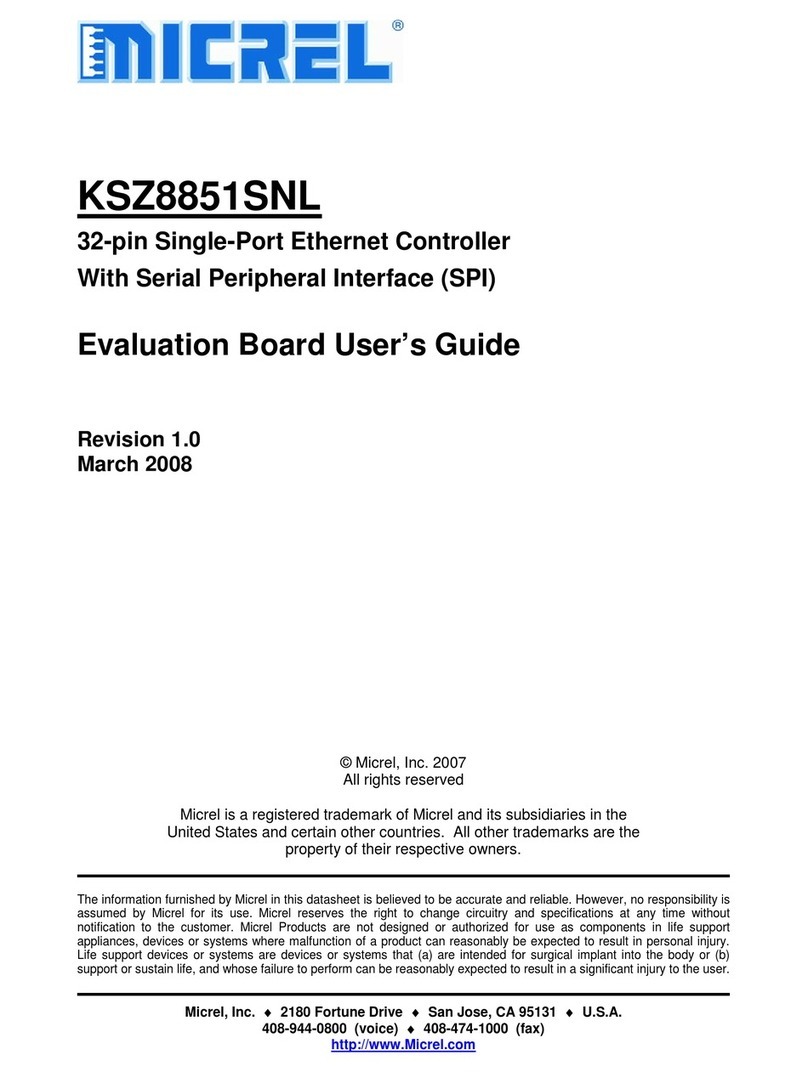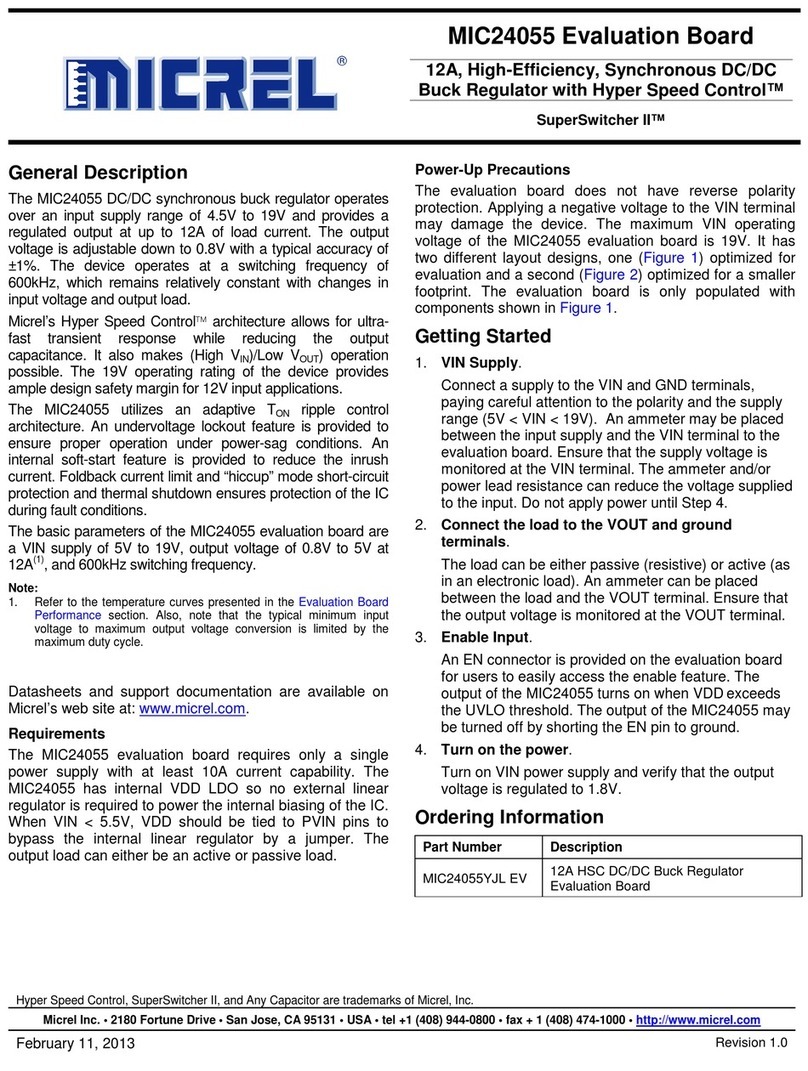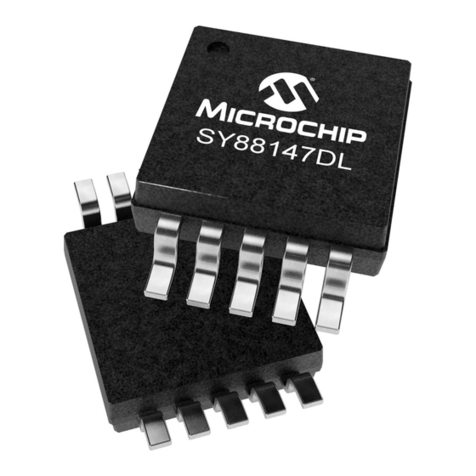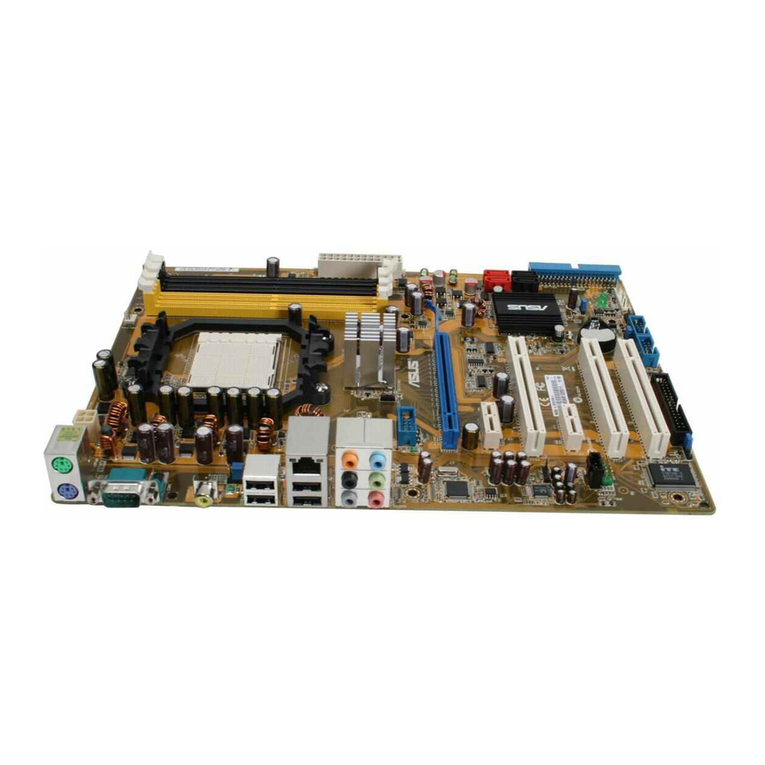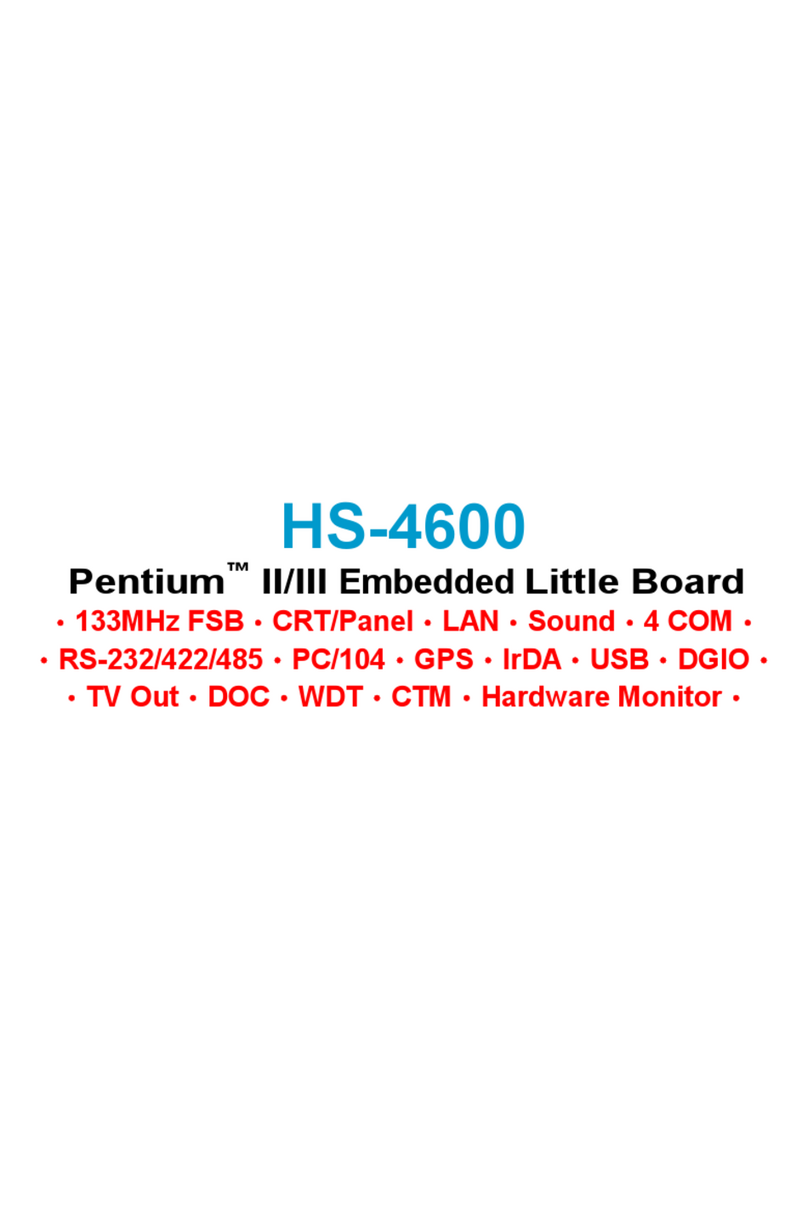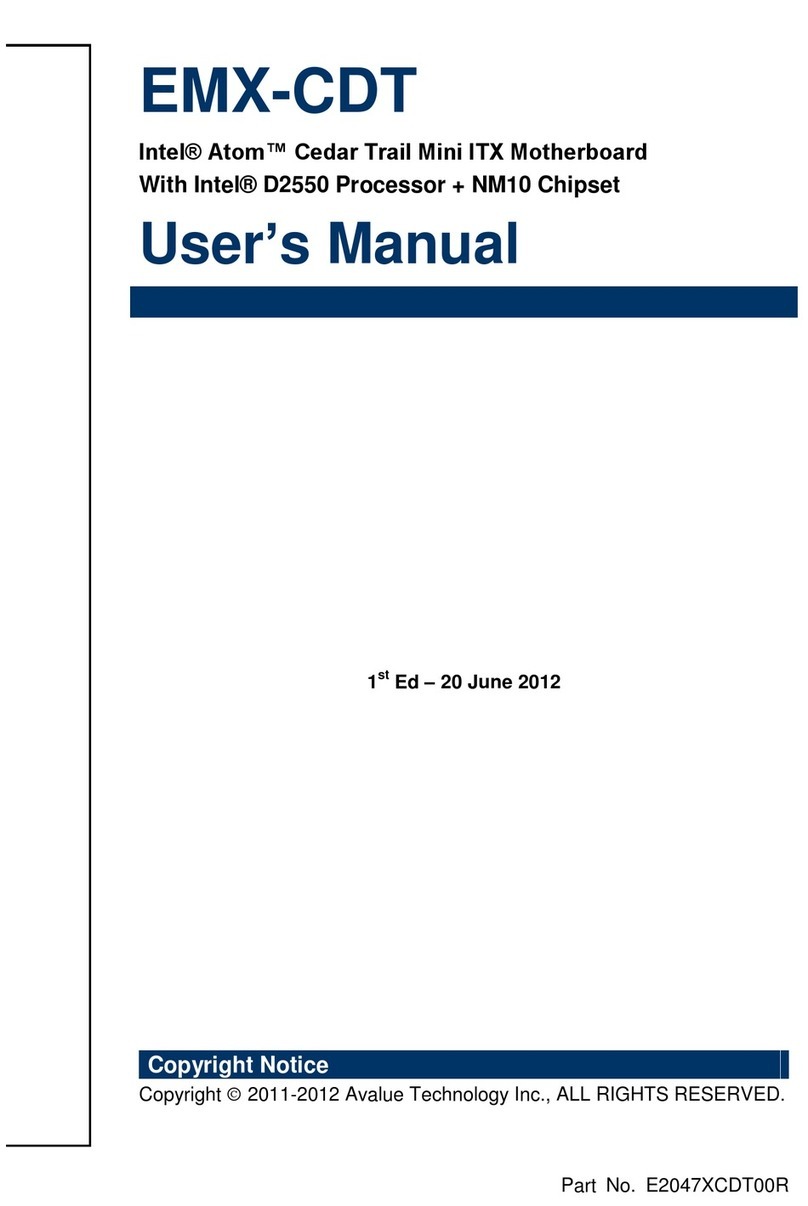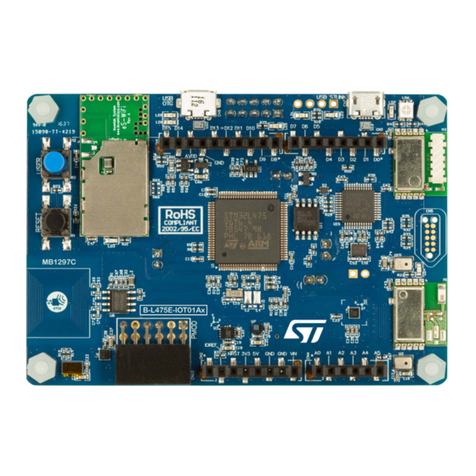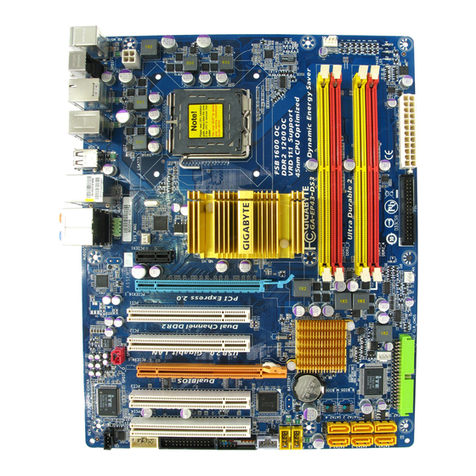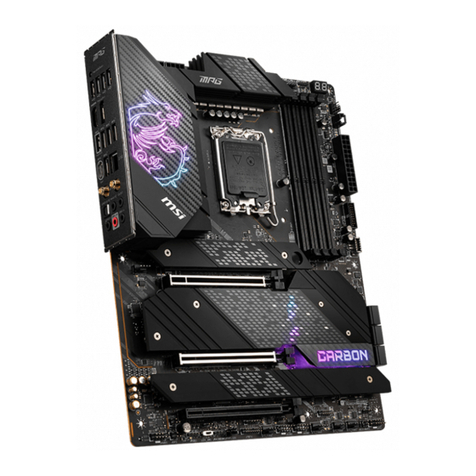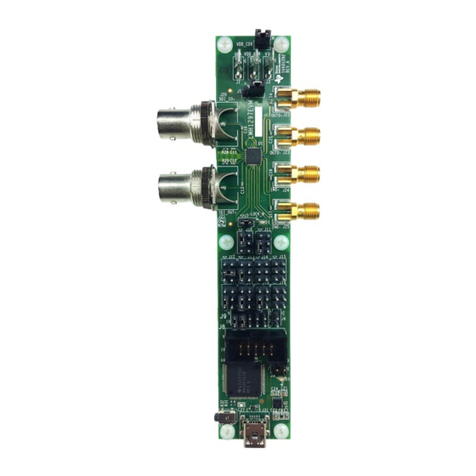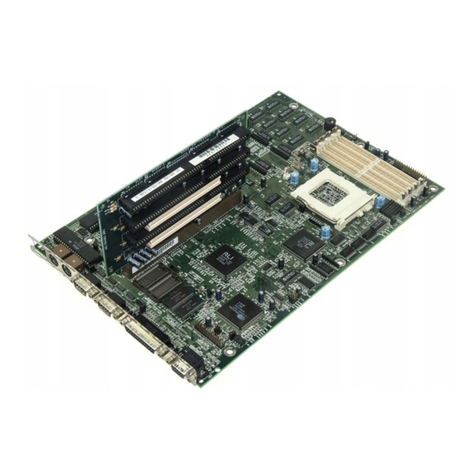Micrel KS8995MA User manual

KS8995MA Evaluation Board User’s Guide
Micrel Inc. Confidential Page 1 11/3/2006
KS8995MA
Evaluation Board User’s Guide
KS8995MA Integrated 5-port 10/100 Ethernet
Managed Switch
Rev 1.7 October 2006

KS8995MA Evaluation Board User’s Guide
Micrel Inc. Confidential Page 2 11/3/2006
Table of contents
1.0 Introduction.....................................................................................................................4
2.0 Features...........................................................................................................................5
3.0 Evaluation Kit Contents..................................................................................................5
4.0 Hardware Description.....................................................................................................5
4.1 Strap In Mode .............................................................................................................7
4.1.1 Feature Setting Jumpers.......................................................................................8
4.2 EEPROM Mode..........................................................................................................9
4.3 SPI Mode ..................................................................................................................10
4.4 10/100 Ethernet Ports................................................................................................11
4.5 LED indicators..........................................................................................................11
4.6 MII Port Configuration.............................................................................................11
5.0 Software Description ....................................................................................................13
5.1 EEPROM Programming Software............................................................................13
5.2 SPI Interface Software..............................................................................................17
6.0 Advanced Test Scenarios..............................................Error! Bookmark not defined.
6.1 MIB Counters............................................................................................................18
6.2 Tag Based VLAN .....................................................................................................20
6.3 Special Tagging Mode..............................................................................................23
6.4 Programmable Rate Limiting....................................................................................24
6.5 Port Mirroring..........................................................................................................27
7.0 Reference Documents...................................................................................................29
9.0 Bill of Material..............................................................................................................32
10.0 Appendix A: SPI Commands......................................................................................34

KS8995MA Evaluation Board User’s Guide
Micrel Inc. Confidential Page 3 11/3/2006
List of Figures and Tables
Figure 1 KS8995MA Evaluation Board Block Diagram......................................................7
Figure 2 Run KEEPROM software.....................................................................................15
Figure 3 Open a default file................................................................................................15
Figure 4 Configuration Registers on the KEEPROM Modify window..............................16
Figure 5 MIB Counter Screen.............................................................................................19
Figure 6 Tagged Ethernet Packet........................................................................................20
Figure 7 VLAN Screen.......................................................................................................22
Figure 8 Rate Limit Screen.................................................................................................26
Figure 9 Port Mirror Screen................................................................................................28
Table 1 Feature Setting Jumpers ......................................................................................... 8
Table 2 Reserved Jumpers .................................................................................................. 9
Table 3 EEPROM Mode Settings ....................................................................................... 9
Table 4 SPI Mode Settings ............................................................................................... 10
Table 5 LED Modes .......................................................................................................... 11
Table 6 MII Mode Settings ............................................................................................... 12
Table 7 SNI Header Pin Definitions ................................................................................. 12
Table 8 VLAN Settings ..................................................................................................... 18
Table 9 Special Tag Format.............................................................................................. 21
Table 10 Special Tag Insertion ......................................................................................... 22
Table 11 SPI Software Commands .................................................................................. 33

KS8995MA Evaluation Board User’s Guide
Micrel Inc. Confidential Page 4 11/3/2006
Revision History
Revision Date Change
1.0 3/6/02 Preliminary release
1.1 3/11/02 Editorial Changes; updated
ESD/EMI guidelines;
updated BOM; changed
references; restructured
procedures
1.2 3/14/02 Updated SPI Commands
1.3 4/22/02 Incorporated Windows SPI
GUI; Updated PSPI
command list; Added
WPSPI procedures.
1.4 5/21/02 Removed JP9 thru JP23 to
reflect updated Reference
Board Schematics Rev. 2.2
1.5 7/2/02 Corrected jumper settings
for SPI.
1.6 8/2/02 Corrected Jumper settings
for MII interface. Sec. 4.6
1.7 11/3/06 Add EEPROM software for
Windows section and other.

KS8995MA Evaluation Board User’s Guide
Micrel Inc. Confidential Page 5 11/3/2006
1.0 Introduction
The KS8995MA is Micrel/Kendin Operations’ third generation integrated 5-port switch.
The device had been designed with cost sensitive systems in mind but still offers a multitude
of features such as switch management; port and tag based VLAN; QoS priority; a dual MII
interface and CPU control and data interfaces. The KS8995MA is an excellent choice in
broadband gateway applications, integrated broadband router applications, and as a stand
alone 5-port switch.
The KS8995MA evaluation board is designed to allow the user to experience first hand the
rich feature set of this exciting new product. The evaluation board is highly configurable
and easy to use.
2.0 Features
•Micrel/ Kendin KS8995MA Integrated 5-port 10/100 Managed Ethernet Switch
•5 RJ-45 Jacks for Ethernet LAN and WAN Interfaces with Corresponding Isolation
Magnetics.
•Auto MDI/MDIX On All Ports.
•1 PHY Mode and 1 MAC Mode MII Connector for the Switch MII Interface
•1 PHY Mode MII Connector for the PHY5 MII Interface
•1 Parallel Port Interface Configurable to Emulate an EEPROM or SPI Interface
•On Board EEPROM
•3 LEDs Per Port to Indicate the Status and Activity
•5VDC, 2.5A Universal Power Supply
3.0 Evaluation Kit Contents
The KS8995MA Evaluation kit includes the following:
•KS8995MA Evaluation Board Rev. 2.0
•KS8995MA Evaluation Board User’s Guide
+5V VDC Wall Power Supply (100-240 Volt)
•Micrel/Kendin EEPROM Configuration Software V1.1
•Micrel/Kendin SPI Configuration Software v.1.51
•KS8995MA Configuration Scripts for SPI Software
•Configuration Scripts for Smartbits Equipment
•KS8995MA Board Schematic Rev. 2.2
•KS8995MA Design Reference Schematic Rev. 3.0
(Contact your Micrel/Kendin FAE for the latest schematic).
4.0 Hardware Description
The KS8995MA evaluation board is in a compact form factor and can sit on a bench near a

KS8995MA Evaluation Board User’s Guide
Micrel Inc. Confidential Page 6 11/3/2006
computer. There are three options for configuration: strap in mode; EEPROM mode; and
SPI mode. Strap in mode configuration is easily done with on board jumper options.
EEPROM mode and SPI mode are accomplished through a built in parallel port interface.
Using Micrel/Kendin software and your PC you can use the parallel port to reprogram the
EEPROM on board, or use the SPI interface to access the KS8995MA’s full feature set. The
board also features two MII connectors for the Switch MII interface. These are to facilitate
connections from the switch to either an external CPU or an external PHY. There is also an
additional MII connector for the PHY5 MII interface. This is used to recover use of the fifth
PHY unit in broadband gateway applications.
The KS8995MA evaluation board is easy to use. There are programmable LED indicators
for link and activity on all ports and a power LED. A manual reset button allows the user to
reset the board without removing the power plug. And a standard 5VDC power supply is
included so that the user can supply power from any 110-240 Volt AC wall or bench socket.

KS8995MA Evaluation Board User’s Guide
Micrel Inc. Confidential Page 7 11/3/2006
Figure 1 KS8995MA Evaluation Board Block Diagram
4.1 Strap In Mode
Strap in configuration mode is the quickest and easiest way to get started. In this mode, the
KS8995MA acts as a stand alone 5 port switch. The user has to simply set the board’s
configuration jumpers to the desired settings and apply power to the board. The user can
also change jumper settings while power is applied to the board and press the convenient
manual reset button for the new settings to take effect. Note that even if there is no external
strap in values are set, internal pull up and pull down resistors will set the KS8995MA
default configuration. Section 4.1.1 covers each jumper on the board and describes its

KS8995MA Evaluation Board User’s Guide
Micrel Inc. Confidential Page 8 11/3/2006
function.
To start in strap in configuration mode, make sure that JP3 is closed and JP4, JP5 and JP8
are open.
4.1.1 Feature Setting Jumpers
The evaluation board provides jumpers to allow the user to easily set strap in configurations
for the KS8995MA. Table 1 describes the jumpers and their function in the open or closed
state.
Table 1 Feature Setting Jumpers
Jumper KS8995MA
Signal Open Closed
JP3 N/A SPI EEPROM
JP4 PS0 EEPROM/SPI Setting. See Section 4.2 and 4.3
JP5 PS1 EEPROM/SPI Setting. See Section 4.2 and 4.3
JP6 SCONF0 MII Setting See Section 4.6
JP7 SCONF1 MII Setting See Section 4.6
JP8 PWRDN-N Normal Operation Hardware Power down
KS8995MA
JP25 PMRXD3 Enable TX flow control Disable TX/RX flow control
JP26 PMRXD2 Disable Back Pressure Enable Back Pressure
JP27 PMRXD1 Drop excessive collision
packets Do not drop excessive
collision packets
JP28 PMRXD0 Aggressive back off
disable Aggressive back off enable
JP29 PMRXER Enable Max Packet Size
Check Disable Max Packet Size
Check
JP30 PCRS Force Half Duplex on port
4 if AN is disabled or
failed
Force Full duplex on port 4 if
AN is disabled or failed
JP31 PCOL Force Flow Control on
port 4 No Force Flow Control on
port 4
JP33 SMRXD3 Disable SW MII Flow
Control Enable SW MII Flow Control
JP34 SMRXD2 SW MII Half Duplex
Mode SW MII Full Duplex Mode
JP35 SMRXD1 SW MII 100 Mbps Mode SW MII 10 Mbps Mode
JP36 SMRXD0 LED Mode 0: LEDx_2 =
Link/Act LEDx_1 =
FullDuplex/Col LEDx_0
= Speed
LED Mode 1: LEDx_2 =
100Link/Act LEDx_1 =
10Link/Act LEDx_0 =
FullDuplex
JP41 MUX1
JP42 MUX2 See Note Below Table.

KS8995MA Evaluation Board User’s Guide
Micrel Inc. Confidential Page 9 11/3/2006
Note: JP41(Mux1) and JP42 (Mux2) can be used to enable low power transceiver mode, and
remote analog loopback. To enable low power transceiver mode, place a jumper between
JP41 pins 1&2, and place a jumper between JP42 pins 1&2. Press the manual reset button
for this to take effect. To enable remote analog loopback mode, place a jumper between
JP41 pins 2&3, and a jumper between JP42 pins 1&2. Press the manual reset button for this
to take effect.
Table 2 Reserved Jumpers
Jumper Number Description Recommended Settings
JP1 SDA Open
JP2 SCL Open
JP24 PMRXDV Open
JP32 SMRXDV Open
JP37 SCOL Open
JP38 SCRS Open
JP39 Test1 Open
JP40 Test2 Open
JP43 FXSD5 Closed
JP44 FXSD4 Closed
4.2 EEPROM Mode
The evaluation board has an EEPROM to allow the user to explore more extensive
capabilities of the KS8995MA. The user can conveniently program the EEPROM on board
using a parallel port from any computer with a WIN 95/98 DOS environment and the
Micrel/Kendin provided software. This makes it easy for the user to evaluate features like
“broadcast storm protection” and “rate control”.
To prepare the KS8995MA evaluation board for EEPROM configuration follow these
steps:
1. Copy the Micrel/Kendin provided EEPROM software to your computer.
2. Set JP3, JP4 and JP5 as specified in Table 3 for EEPROM mode configuration. Make
sure that the EEPROM is installed on the board.
Table 3 EEPROM Mode Settings
Jumper Description Setting
JP3 EEPROM/SPI Closed
JP4 Serial Bus Config. (PS0) Open
JP5 Serial Bus Config. (PS1) Open

KS8995MA Evaluation Board User’s Guide
Micrel Inc. Confidential Page 10 11/3/2006
3. Connect the computer’s parallel port to the KS8995MA board with a parallel port
cable.
4. Connect the 5 VDC power supply to the KS8995MA.
5. Plug the power supply into a 110V wall or bench socket. The KS8995MA will power
up in its default configuration if there is no information in the EEPROM.
6. Program the desired settings into the EEPROM using the Micrel/Kendin software. See
the software description section 5.1 for details.
7. Press the manual reset button. The KS8995MA will reset and read the new
configuration in the EEPROM. After reset, the KS8995MA is ready for normal
operation.
4.3 SPI Mode
An SPI interface to the KS8995MA allows access to all of the KS8995MA features and
registers. The user can easily access the SPI interface using a computer connected to the
evaluation board’s parallel port interface. Micrel/Kendin provides a simple Windows 98
DOS based program for the user to evaluate the KS8995MA’s full feature set. In addition to
all the registers available via EEPROM programming, a host CPU connected to the
KS8995MA’s SPI interface will be able to access all static MAC entries, the VLAN table,
dynamic MAC address table and the MIB counters.
To prepare the KS8995MA evaluation board for SPI mode configuration follow these
steps:
1. Copy the Micrel/Kendin provided SPI interface software on your computer.
2. Set JP3, JP4 and JP5 as specified in Table 4 for SPI mode configuration.
Table 4 SPI Mode Settings
Jumper Description Setting
JP3 EEPROM/SPI Open
JP4 Serial Bus Config. (PS0) Open
JP5 Serial Bus Config. (PS1) Closed
3. Connect the computer’s parallel port to the KS8995MA board with a parallel port cable.
4. Remove the EEPROM from the evaluation board. (Optional)
5. Connect the 5 VDC power supply to the KS8995MA.
6. Plug the power supply into an 110V wall or bench socket. The KS8995MA will power
up in its default configuration with the start switch in register 1 bit 0 set to ‘0’ which
means “off”.
7. Open an MSDOS window and navigate to the directory where the “pspi.exe” file is
stored. Type “pspi” at the prompt to invoke the software.
8. Program the desired settings using the Micrel/Kendin SPI interface soft ware. See the
software description section 5.2 for details.
9. Type ‘s’ at the SPI software prompt to start the KS8995MA.
10. To quit the software, type ‘q’ at the command prompt.

KS8995MA Evaluation Board User’s Guide
Micrel Inc. Confidential Page 11 11/3/2006
4.4 10/100 Ethernet Ports
There are five 10/100 Ethernet ports on the KS8995MA evaluation board. The ports can be
connected to a traffic generator or analyzer via standard RJ45 connectors using CAT-5
cables. Each port can be used as either an uplink or downlink. All ports support auto
MDI/MDIX so there is no t need for cross over cables.
J1 = RJ45 connector for port 1
J2 = RJ45 connector for port 2
J3 = RJ45 connector for port 3
J4 = RJ45 connector for port 4
J5 = RJ45 connector for port 5
4.5 LED indicators
There are five columns of LED indicators, one column for each of the five ports. The LED
indicators are programmable to two different modes. You can program the LED mode
through a strap in option on JP36 or in register 11, bit 1. The mode definitions are shown in
Table 5. There are three LEDs per port. The naming convention is “LEDx_y”, where “x” is
the port number, and “y” is the number of the LED for that port.
Table 5 LED Modes
Mode 0 Mode1
LEDx_2 = Link/Act LEDx_2 = 100Link/Act
LEDx_1 = FullDuplex/Col LEDx_1 = 10Link/Act
LEDx_0 = Speed LEDx_0 = FullDuplex
LED1_y = are assigned to Port 1
LED2_y = are assigned to Port 2
LED3_y = are assigned to Port 3
LED4_y = are assigned to Port 4
LED5_y = are assigned to Port 5
The board also has a power LED for the 3.3V power supply.
D2 = indicates 3.3V Power on and off
4.6 MII Port Configuration
There are two MII ports on the KS8995MA. One port connects to the fifth MAC in the
KS8995MA, and we refer to it as the Switch MII port. The second MII port connects to the
fifth PHY in the KS8995MA. We refer to this as the PHY5 MII port. Both the Switch MII
port and the PHY5 MII port configuration are set on the board by using the MII Enable bit
(register 2, bit 3) in conjunction with JP6 and JP7 as shown in Table 6.

KS8995MA Evaluation Board User’s Guide
Micrel Inc. Confidential Page 12 11/3/2006
The Switch MII port can be set to PHY mode, MAC mode or SNI mode. In PHY mode, the
Switch MII port will transmit and receive signals on J7, the Switch MII port’s male MII
connector. This mode is usually used to connect the KS8995MA to a CPU. In MAC mode,
the Switch MII port will transmit and receive signals on J8, which is a female MII connector.
This interface is normally used to connect the KS8995MA to an external PHY. We also
have provisions on the board to support the SNI 7 wire interface. In SNI mode, the Switch
MII port will transmit and receive signals on header pins. The connections between the
header pins and the SNI signals are shown in the table Table 7.
The PHY5 MII port is used to connect to an external MAC or CPU. This port is only in PHY
mode.
Table 6 MII Mode Settings
MII Enable Bit
(reg. 2, bit 3) JP7 JP6 Switch MII PHY[5] MII
0 Open Open Disable, Outputs
Tri-stated Disable, Outputs
Tri-stated
0 Open Closed phy mode MII Disable, Outputs
Tri-stated
0 Closed Open mac mode MII Disable, Outputs
Tri-stated
0 Closed Closed phy mode SNI Disable, Outputs
Tri-stated
1 Open Open Disabled Disabled
1 Open Closed phy mode MII phy mode MII
1 Closed Open mac mode MII phy mode MII
1 Closed Closed phy mode SNI phy mode MII
Table 7 SNI Header Pin Definitions
Header Pin SNI Signal KS8995MA
Signal
TP14 RXC SMRXC
TP15 CRS SMRXDV
TP16 TXC SMTXC
TP17 TXEN SMTXEN
TP18 TXD SMTXD0
TP19 RXD SMRXD0
TP20 COL SCOL

KS8995MA Evaluation Board User’s Guide
Micrel Inc. Confidential Page 13 11/3/2006
5.0 Software Description
5.1 EEPROM Programming Software in DOS
Micrel/Kendin provides DOS based software so that you can use a computer with a
Windows 98 DOS environment and a parallel port to program the KS8995MA evaluation
board’s EEPROM without the added expense of an external EEPROM programmer. The
program is an executable file that is included with your evaluation kit.
To run the program simply double click on its icon in the windows environment. A DOS
window will appear displaying an opening screen:
Micrel/Kendin COMMUNICATIONS
Sunnyvale, California
TEL: (408) 735 1118 x253
J. Yu 3/2002 V1.0
24C01 EEPROM PROGRAMMER
Connect a DB25 cable from parallel printer port to KS8995E demo board. Set
printer port to NORMAL mode.
Push ENTER to continue
Follow the instructions and then press enter. A listing of all the default settings will appear
followed by a menu. The settings are displayed from left to right on your screen with the
address in decimal, followed by the value in hex.
Contents of default data:
# data # data # data # data # data # data # data # data # data # data
0 55 1 95 2 f0 3 0 4 0 5 c0 6 0 7 c1 8 1f 9 1f
10 1f 11 1f 12 1f 13 80 14 1 15 80 16 2 17 80 18 3 19 80
20 4 21 80 22 5 23 0 24 0 25 0 26 0 27 0 28 0 29 0
30 0 31 0 32 1 33 2 34 3 35 4 36 5 37 ff 38 ff 39 ff
40 ff 41 ff 42 ff 43 ff 44 ff 45 ff 46 ff 47 ff 48 ff 49 ff
50 ff 51 ff 52 ff 53 ff 54 ff 55 ff 56 ff 57 ff 58 ff 59 ff
60 ff 61 ff 62 ff 63 ff 64 ff 65 ff 66 ff 67 ff 68 ff 69 ff
70 ff 71 ff 72 ff 73 ff 74 ff 75 ff 76 ff 77 ff 78 ff 79 ff
80 ff 81 ff 82 ff 83 ff 84 ff 85 ff 86 ff 87 ff 88 ff 89 ff
90 ff 91 ff 92 ff 93 ff 94 ff 95 ff 96 ff 97 ff 98 ff 99 ff
100 ff 101 ff 102 ff 103 ff 104 ff 105 ff 106 ff 107 ff 108 ff 109 ff
110 ff 111 ff 112 ff 113 ff 114 ff 115 ff 116 ff 117 ff 118 ff 119 ff
120 ff 121 ff 122 ff 123 ff 124 ff 125 ff 126 ff 127 ff
Enter Option:
1. Write EEPROM
2. Change buffer data
3. Save buffer to file (Enter file name)
4. Read custom file
5. Read EEPROM to buffer
6. Verify EEPROM
7. Program default values
8. Exit
Menu Command Descriptions:
1. Write EEPROM – use this command when you want to write the values stored in your
computer’s memory to the EEPROM on the KS8995MA board.

KS8995MA Evaluation Board User’s Guide
Micrel Inc. Confidential Page 14 11/3/2006
2. Change Buffer Data – use this command to change values in the computer’s memory.
You can change values at multiple addresses before writing your configuration to the
EEPROM using option 1.
3. Save buffer to file – this command allows the user to save the configuration to a binary
formatted file. Simply type in a “3” at the command prompt, and then type in the name
of the file you want to save it to.
4. Read custom file – this command allows the user to read a binary file that was saved
earlier.
5. Read EEPROM to buffer – this command reads back the contents of the EEPROM on
the KS8995MA evaluation board into the computer’s memory for display.
6. Verify EEPROM – Check contents of the EEPROM against those in the
computer’s buffer
7. Program default values – this command allows the user to configure the
EEPROM with all the default values in one step.
8. Read KS8995MA registers – Not used.
9. Exit – Use this command to close the program.
Please see the KS8995MA Datasheet for all register descriptions.
Be sure to press the manual reset button after configuration so that the KS8995MA will
reset and read the new configuration in the EEPROM. After reset, the KS8995MA is ready
for normal operation.
5.2 EEPROM Programming Software in Windows
Micrel/Kendin provides Window based software so that you can use a computer with a
Windows 98/2000/NT/XP environment and a parallel port to program the KS8995MA
evaluation board’s EEPROM without the added expense of an external EEPROM
programmer. The KEEPROM software program is an executable file that is included with
your evaluation kit. There should have a sentence “allowio keeprom.exe ox378” in a batch
file to support Window 2000/NT/XP.
To run the program, simply double click on WinEEP batch file with the support sentence in
the software folder of the design package under the windows environment. A programming
window will appear displaying an opening screen as figure 2.

KS8995MA Evaluation Board User’s Guide
Micrel Inc. Confidential Page 15 11/3/2006
Figure 2 Run KEEPROM software
Click the File menu and open a default95M data file, the default values will display on the
window of the KEEPROM as shown in Figure 3.
Figure 3 Open a default file

KS8995MA Evaluation Board User’s Guide
Micrel Inc. Confidential Page 16 11/3/2006
Click the Tool menu which contains Verify, Upload, Download and Modify function,
If click Modify function, the window will display as shown in Figure 4.
Figure 4 Configuration Registers on the KEEPROM Modify window
You can modify all registers values based on the Modify window and register number for
KS8995MA configuration. Once you finish the modification and configuration, click “OK”
and click the Download function in Tool menu. The new data will download into the
EEPROM. Please see the KS8995MA Datasheet for all register descriptions.
Be sure to press the manual reset button after configuration so that the KS8995MA will
reset and read the new configuration in the EEPROM. After reset, the KS8995MA is ready
for normal operation.

KS8995MA Evaluation Board User’s Guide
Micrel Inc. Confidential Page 17 11/3/2006
5.3 SPI Interface Software
Micrel/Kendin provides Windows 98 based software to enable the user to use the
KS8995MA’s SPI interface with a computer and a parallel port connection. The software
comes in two parts, a command line interface, and a simple graphical user interface.
The command line interface is an executable file called “pspi.exe” which runs in a Windows
98 DOS environment. All of the KS8995MA registers can be accessed using pspi.exe. The
command line interface also supports scripts so that the user can create custom
configuration files for the KS8995MA. We have also provided some scripts for the SPI
software to make configuration for the advanced test scenarios in the following sections
quick and easy. We recommend copying the scripts and the pspi.exe program to the same
directory before invoking the pspi.exe program. We also recommend opening an MSDOS
window and running the pspi.exe program from the MSDOS prompt. For a complete list of
commands see Appendix A.
The graphical interface is an executable called “wpspi.exe” that runs in a Windows 98
environment. The graphical user interface allows the user to be able to read MIB counters;
set the static MAC ID table; configure the VLAN table; and enable the rate-limiting and
port mirroring features of the KS8995MA. The graphical interface does not allow access to
the KS8995MA’s full register set, but gives the user an easy and comprehensive way to
configure the KS8995MA for evaluation.
Please note the following when using Micrel/Kendin SPI software:
1. This program only supports Windows 98 and Windows ME DOS box mode.
2. Set parallel port BIOS setting to ECP+EEP mode.
3. KS8995MA demo board Rev 1.1 cannot reliably communicate with some PCs that have
poor parallel port signal quality. Switch to another PC if you are experiencing
unreliable reading problems.
6.0 Advanced Test Scenarios
This section describes test procedures that illustrate how to use the advanced features in the
KS8995MA. All of these features are accessible with a host CPU through the SPI interface
in real applications. We have provided Smartbitsconfiguration files to make these tests easy
to set up. However there are some limitations. Please be sure that Auto-negotiation is set on
your Smartbits equipment and that flow-control is enabled for all tests. We cannot control
this through the Smartbits configuration file. Also, different Smartbits chassis require
different configuration files. Please choose the appropriate folder for your Smartbits
equipment, i.e. Smartbits 600, Smartbits 1000, Smartbits 2000. We recommend resetting
the evaluation board for each new test to ensure that the KS8995MA comes up in default
configuration. These scenario procedures assume that the user has prior experience with
Smartbits equipment.

KS8995MA Evaluation Board User’s Guide
Micrel Inc. Confidential Page 18 11/3/2006
6.1 MIB Counters
There are 34 MIB counters per port on the KS8995MA. These counters are used to monitor
port activity for network management. The following is an eMAmple of how to use
Micrel/Kendin software and your computer’s parallel port to access the MIB counters.
In this eMAmple we will use Smartbits equipment to generate erroneous traffic to 4 ports on
the KS8995MA to exercise the MIB counters. We will transmit 100,000 packets from each
port in this simple eMAmple. The destination and source addresses should be set so that
packets received on port 1 will be destined for port 2 and packets received on port 2 will be
destined for port 3 and so on. The mib.prf smartbits configuration file will set this up for
you.
Port Packet Length Error Generation Error Type
1 60 CRC Error CRC Error
2 59 Less than 60 bytes + CRC Error Fragment
3 59 Less than 60 bytes Undersize
4 1560 Longer than 1514 bytes Oversize
5 N/A N/A N/A
Note: Smartbits will add a 4 byte CRC to the end of each packet.
PSPI Procedure:
1. Connect the smartbits tester to the KS8995MA with standard CAT-5 cables. Connect
smartbits port 1 to port 1 on the KS8995MA evaluation board. Connect Smartbits port
2 to port 2 on the KS8995MA evalutation board, etc…
2. Connect your computer to the KS8995MA evaluation board with a parallel port cable.
3. Configure the jumper settings on the board for SPI mode. See section 4.3 for details.
Power on the board.
4. It is best to have an MSDOS window open on your computer in the directory where
pspi.exe is contained so you can invoke the SPI software by typing “pspi” at the
MSDOS prompt.
5. Configure the Smartbits tester by opening the mib.prf file. Transmit a few packets from
the Smartbits tester to ports 1-4 by pressing the SMB group start button. This is so the
switch can learn addresses.
6. Stop all transmission and clear the MIB counters by typing ‘z’ at the pspi command
prompt.
7. Type “dall” at the prompt to ensure that all the counters are zeroed out.
8. Transmit 100,000 packets from the Smartbits tester to ports 1-4. You can do this by
pressing the start button under SMB group.
9. Type the “dall” command again to display the MIB counter values on screen.
10. Type “q” to exit the pspi program.
Expected Results:

KS8995MA Evaluation Board User’s Guide
Micrel Inc. Confidential Page 19 11/3/2006
MIB Counter Port 1 Port 2 Port 3 Port 4 Port 5
RxLoPriorityByte 6400000 6300000 6300000 156400000 0
RxUndersizePkt 0 0 100000 0 0
RxFragments 0 100000 0 0 0
RxOversize 0 0 0 100000 0
RxCRCerror 100000 0 0 0 0
Rx64Octets 100000 0 0 0 0
Note: All other counters are zero.
WPSPI Procedure:
1. Follow steps 1-3 above in PSPI procedure.
2. Configure the Smartbits tester by opening the mib.prf file. Transmit a few packets
from the Smartbits tester to ports 1-4 by pressing the SMB group start button. This is so
the switch can learn the addresses in the dynamic MAC address table.
3. Double click the wpspi.exe icon to invoke the WPSPI GUI software.
4. Click on the MIB tab.
5. Click on the “Reset Counters” button. All counters should be reset to zero.
6. Transmit 100,000 packets from the Smartbits tester to ports 1-4. You can do this by
pressing the start button under SMB group.
7. The counters should increment to the values as shown below.
Figure 5 MIB Counter Screen

KS8995MA Evaluation Board User’s Guide
Micrel Inc. Confidential Page 20 11/3/2006
Interpretation of results: The RxLoPriorityByte counter is incremented for all ports because
the priority feature is not turned on. All packets are considered low priority. Port 1 shows
100000 CRC error packets and 100000 64 byte packets received. Note that the Rx64Octets
counter increments even when the packets have CRC errors. Port 2’s counter show 100000
fragments received, which is consistent with the packets sent from the smartbits tester. A
fragment is defined as a packet that is less than the minimum packet size and has a CRC
error. The undersized packet is defined as a packet that is less than the minimum packet size,
but has a valid CRC. Port 3 shows 100000 undersized packets. Port 4’s counter shows
100000 oversize packets. An oversized packet is defined as a packet larger than the
maximum packet size.
6.2 Tag Based VLAN
The KS8995MA supports 16 different tag based VLANs. There are 12 bits in the IEEE
802.1Q VLAN ID field, allowing for 4096 different VLAN ID’s. The KS8995MA supports
16 active VLANs. Any one of the 4096 available VLAN ID’s can be specifed as one of 16
active VLANs in the KS8995MA. If a non-tagged packet or a null VID packet is received,
the KS8995MA will use the ingress port’s programmable default VID for look up.
Figure 6 Tagged Ethernet Packet
The following scenario demonstrates how to use the tagged based VLAN feature in the
KS8995MA. The objective is to create two separate VLANs and show that they are isolated
from one another. VLAN 1 will have in its membership ports 1, 2, 3 and 5. VLAN 2 will
have in its membership ports 4 and 5. If an incoming packet is not tagged, the KS8995MA
has a feature that will use the ingress port’s default VID for port forwarding. The
KS8995MA also has an optional feature to discard packets whose VID port membership in
the VLAN table does not include the ingress port.
Table of contents
Other Micrel Motherboard manuals
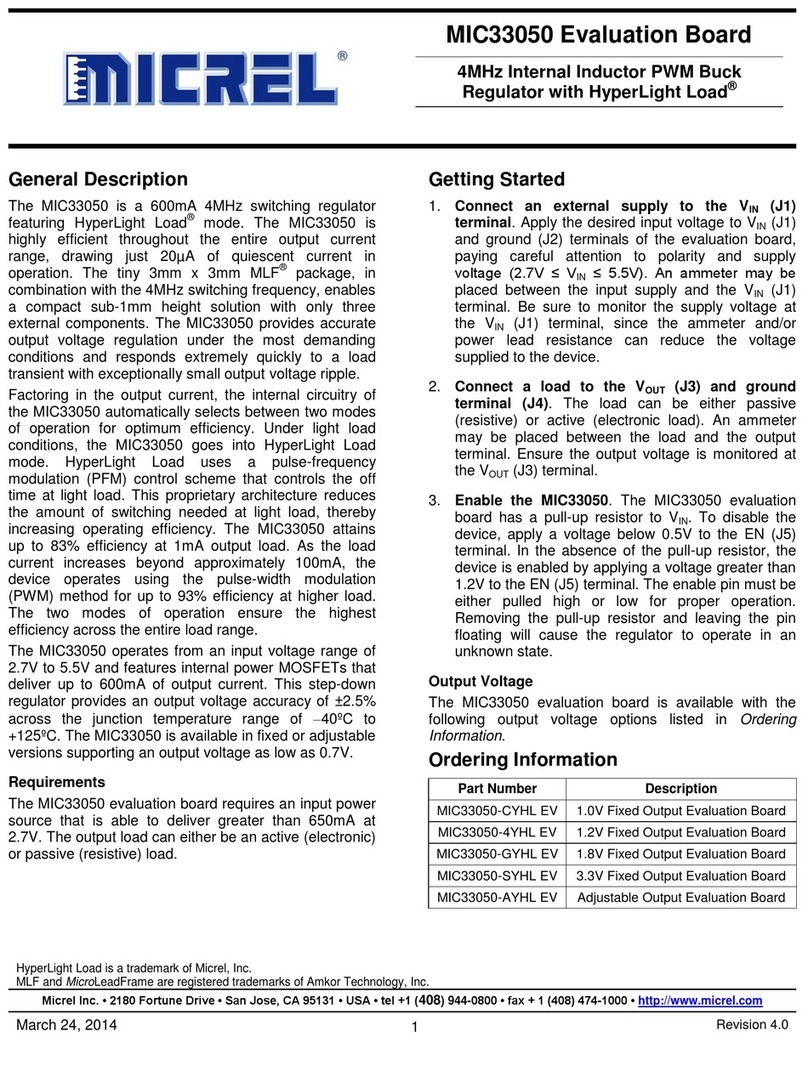
Micrel
Micrel MIC33050 User manual
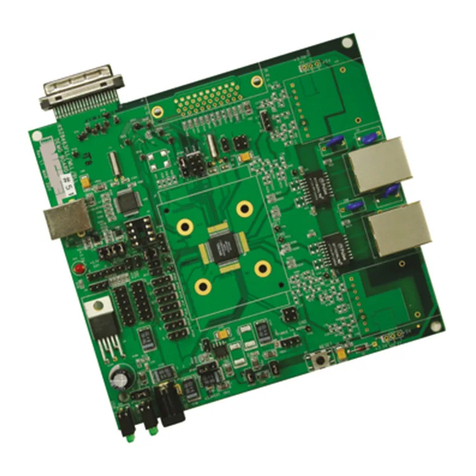
Micrel
Micrel KSZ8463ML User manual
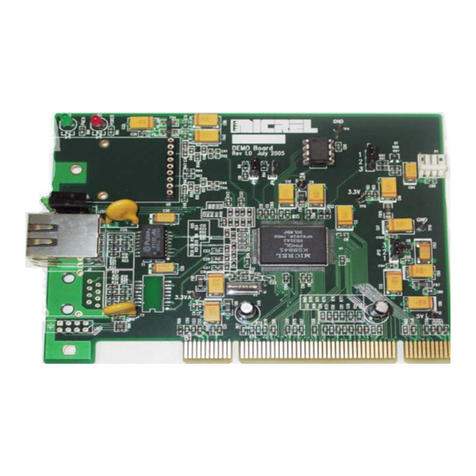
Micrel
Micrel KSZ8841-PMQL User manual
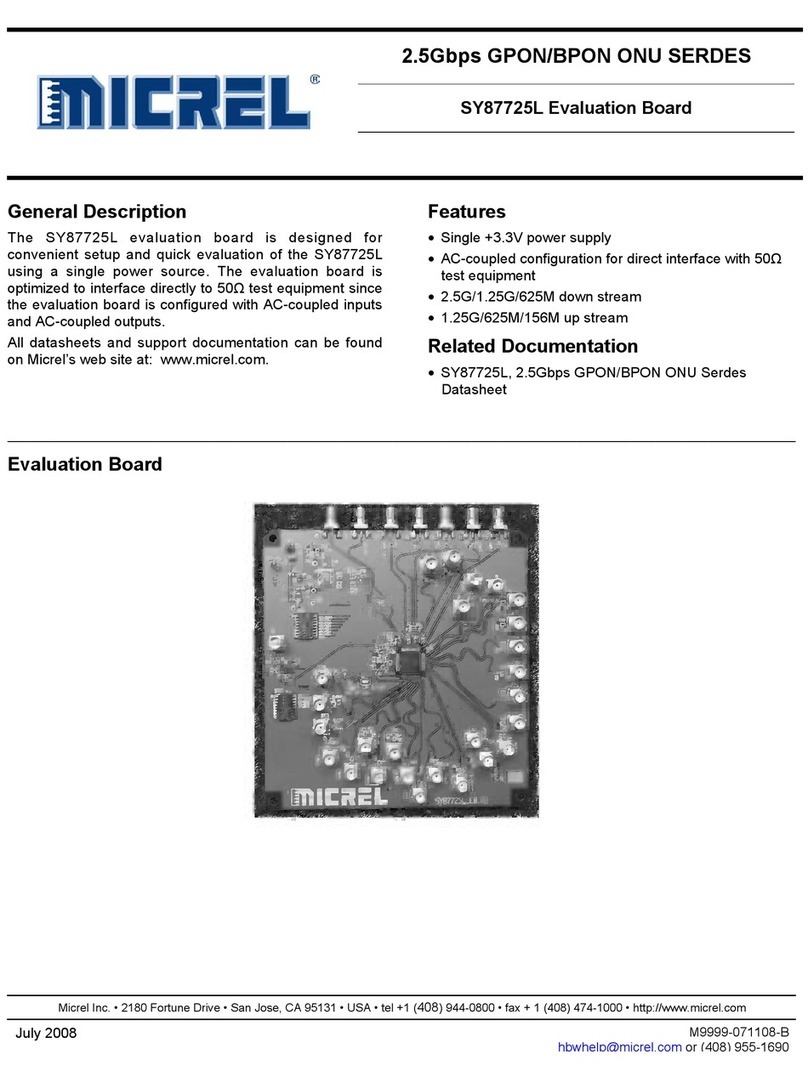
Micrel
Micrel SY87725L User manual

Micrel
Micrel KSZ9031MNX User manual
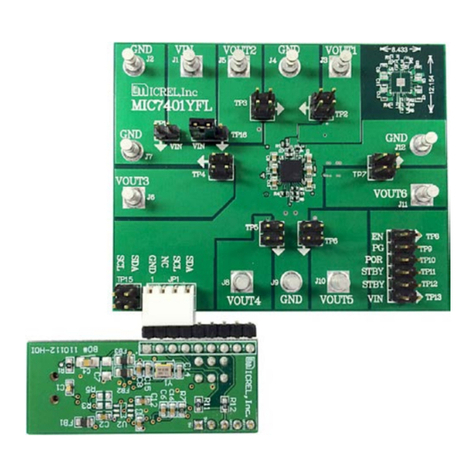
Micrel
Micrel MIC7401 User manual
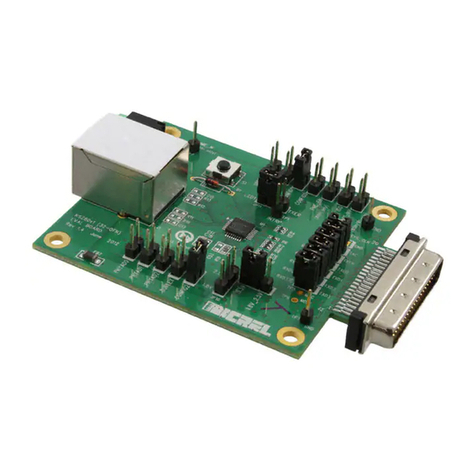
Micrel
Micrel KSZ8081MNX User manual

Micrel
Micrel KSZ8851SNL-Eval User manual
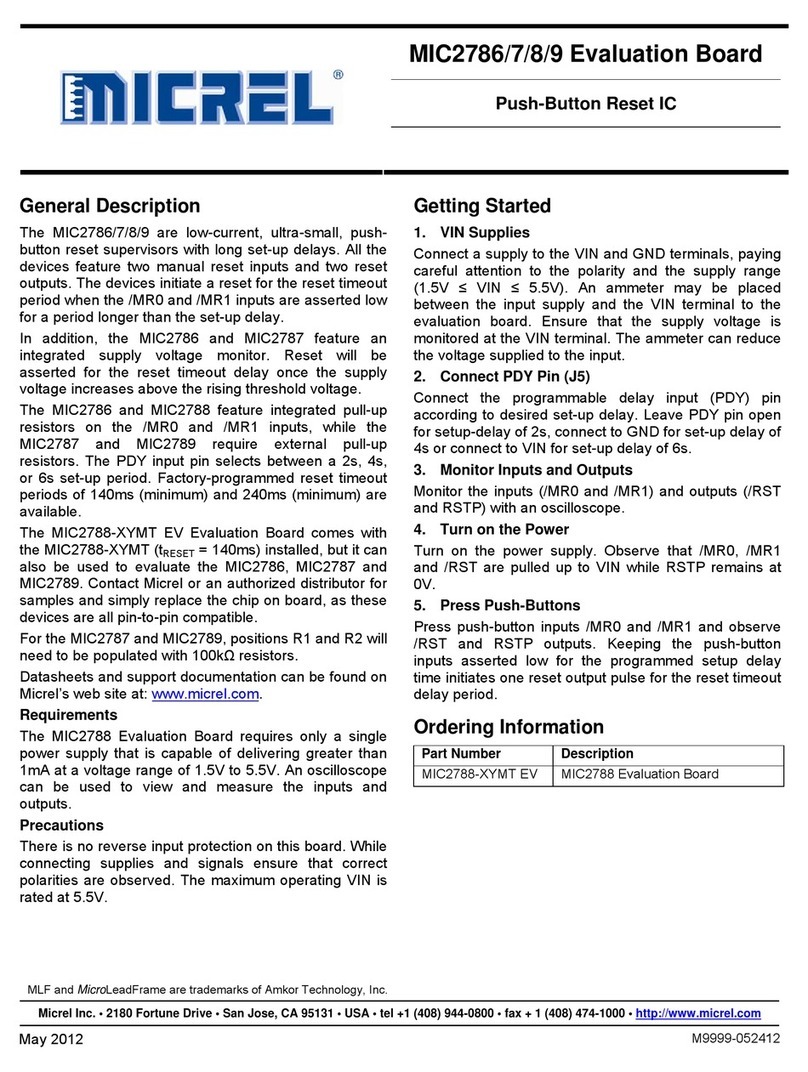
Micrel
Micrel MIC2786 User manual

Micrel
Micrel SY88212L User manual
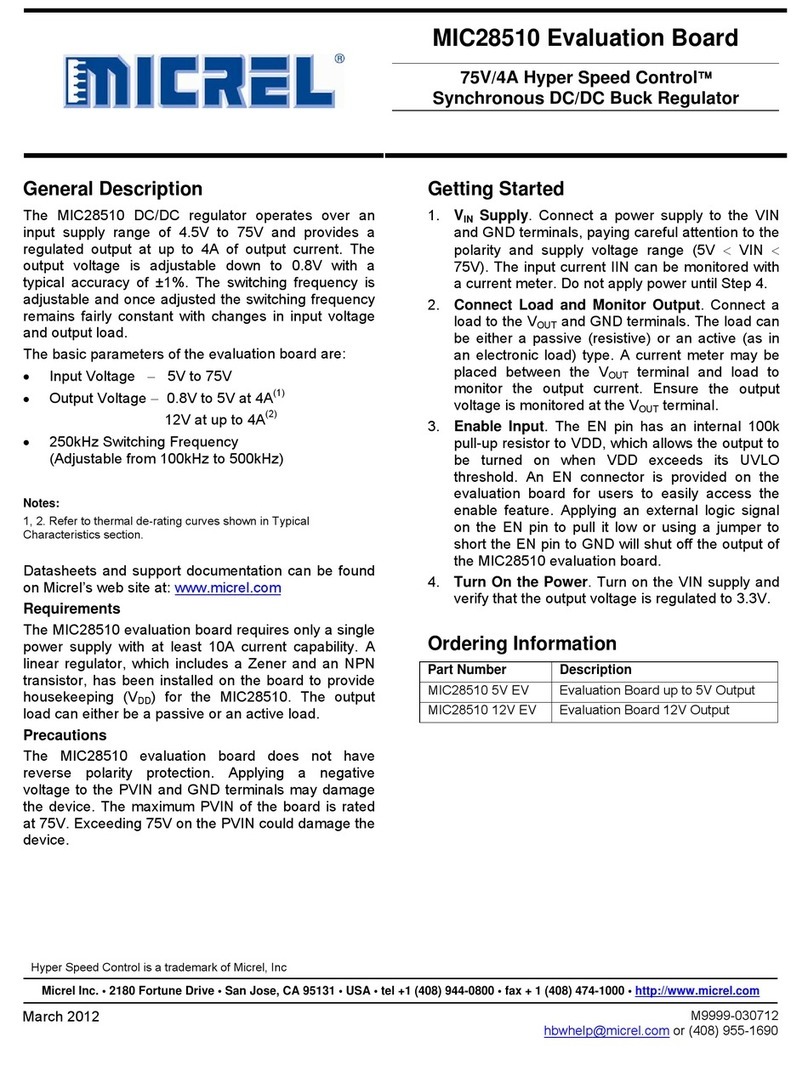
Micrel
Micrel mic28510 User manual
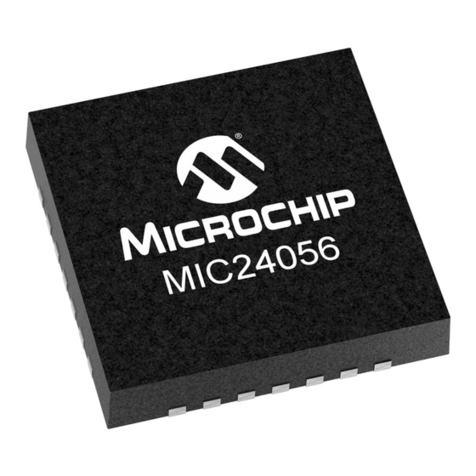
Micrel
Micrel MIC24056 User manual

Micrel
Micrel KSZ8873MLL User manual

Micrel
Micrel MIC23031-4YMT EV User manual

Micrel
Micrel KSZ8895 User manual
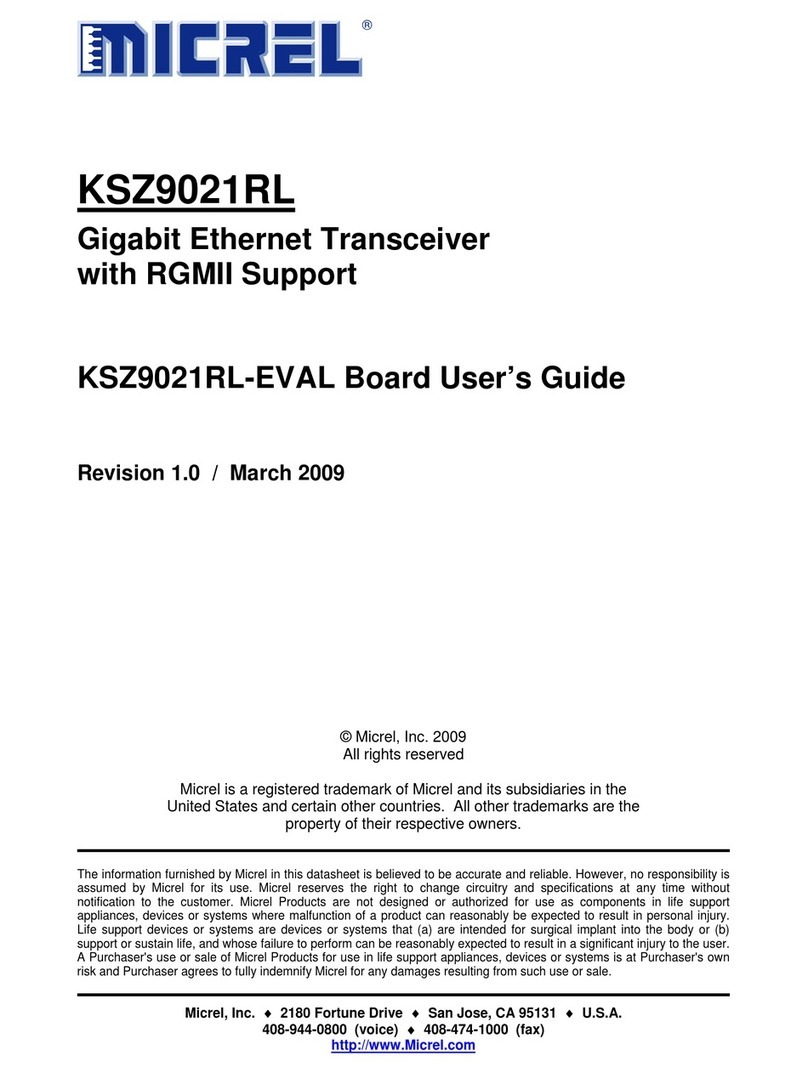
Micrel
Micrel KSZ9021RL-EVAL User manual

Micrel
Micrel KS8721BL/SL User manual
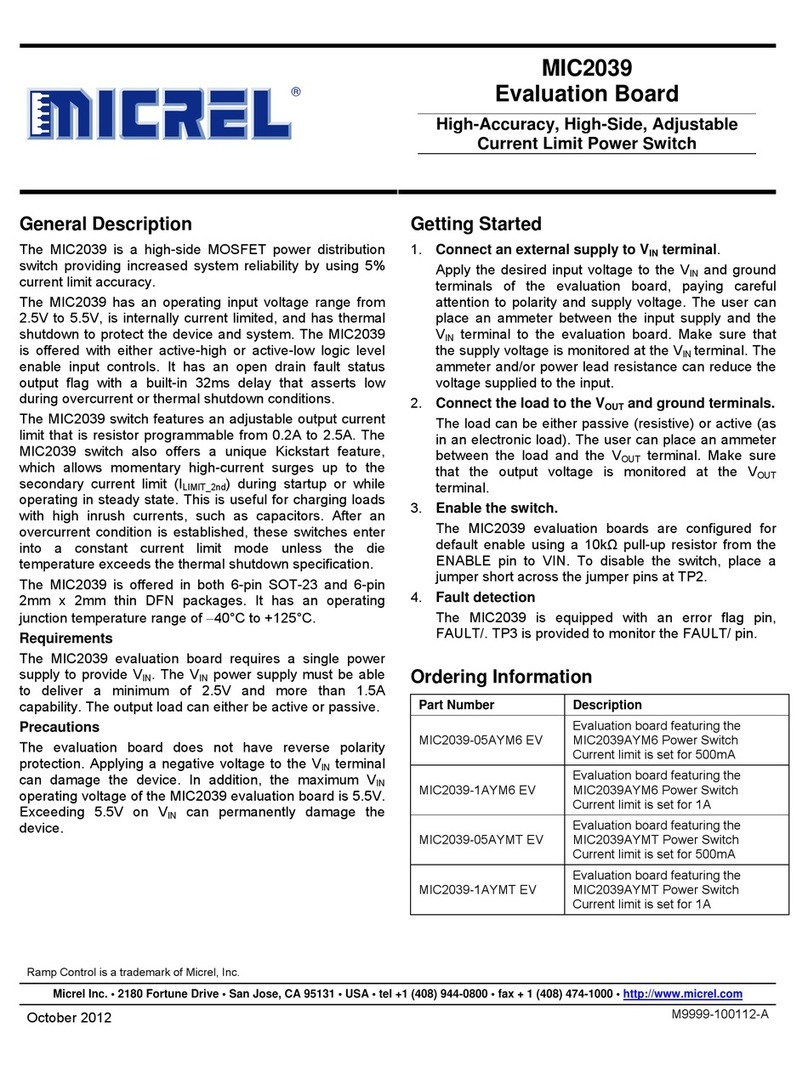
Micrel
Micrel MIC2039 User manual
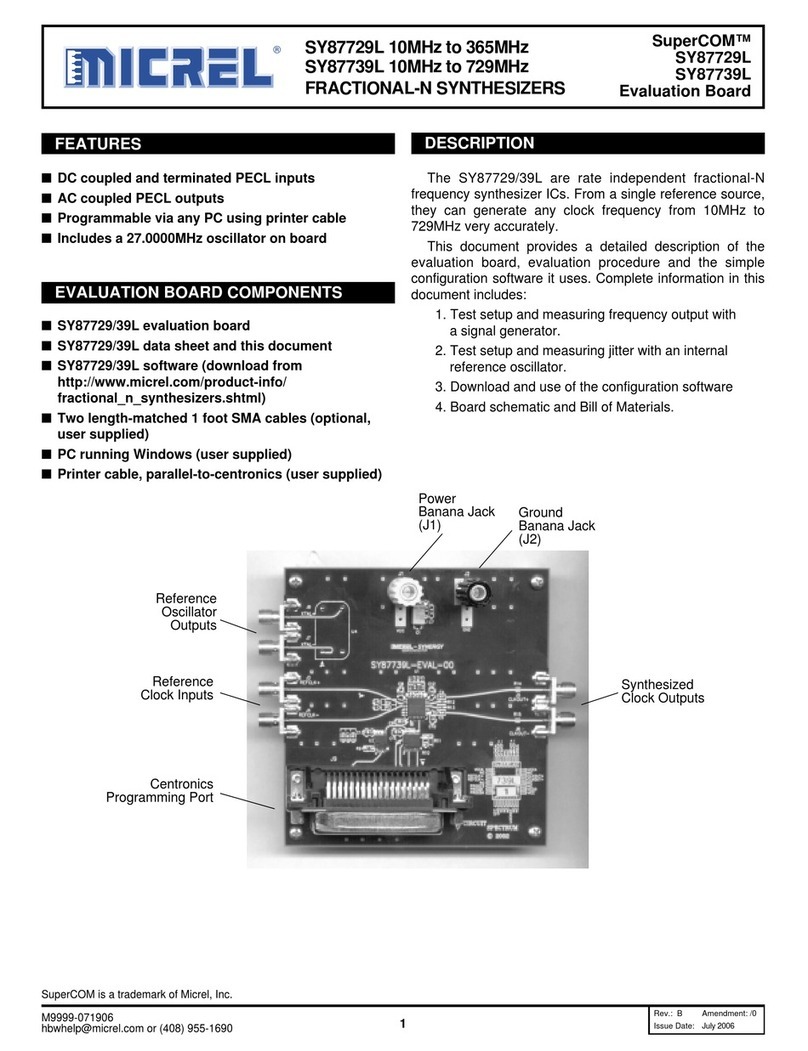
Micrel
Micrel SY87729L User manual

Micrel
Micrel MIC4724YMME User manual
